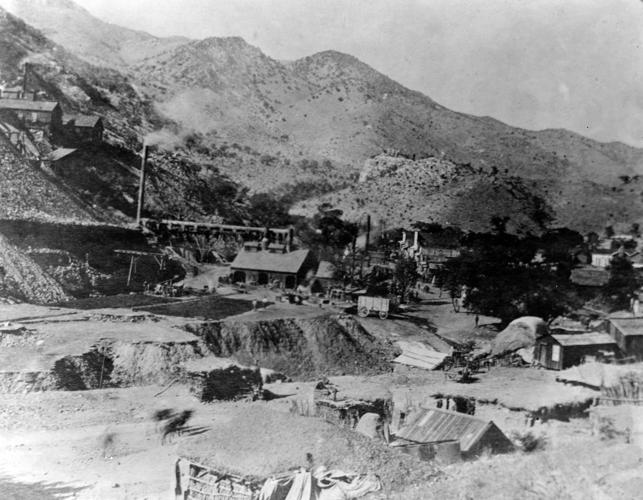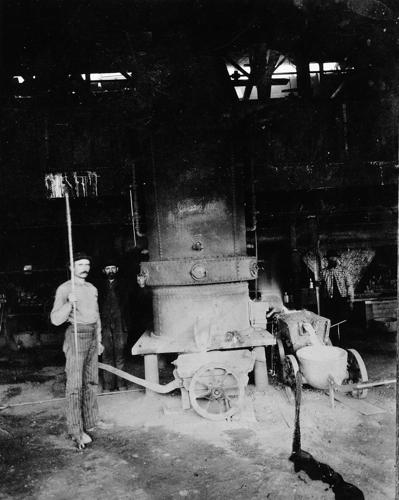The Copper Queen deposit, dismissed by its discoverer as little more than “copper-stained rock,” turned out to be a massive body of copper-rich malachite that put Bisbee on the map.
Hugh Jones discovered the deposit in 1877, but — being not impressed — soon abandoned his claim to George Eddlemann and M.A. Herring. John Ballard and William H. Martin of San Francisco then acquired what became known as the Copper Queen prospect.
Both men, inexperienced in the mining profession, relied upon the advice of Ben and Lewis Williams, sons of prominent Welsh miner John Williams in Globe. John Williams was a partner with De Witt F. Bisbee in the brokerage firm Bisbee, Williams & Co. of San Francisco. The new town that sprung up near the copper prospect was christened Bisbee, after the man who provided much of the funding toward Ballard & Martin mining operations.
The town’s first smelter was built by George Center in 1880. It consisted of a 36-inch water-jacketed cupola. Fuel in the form of English coke was imported from San Francisco. The ore at the time was considerably high grade, averaging 23 percent copper. Development focused around a 50-foot open cut along with two parallel tunnels bored into a large body of limestone ore. The Copper Queen claim then comprised more than 640 feet of tunnels, cross-cuts and winzes penetrating the 160-foot-thick ore body.
Bisbee then had a population of 500 people.
Eastern metallurgist Dr. James Douglas was called to Arizona for the first time to evaluate the ore potential of the Copper Queen. Douglas gave high value to the mine, though it was already being negotiated for purchase by a Boston family.
Douglas also convinced the partners of Phelps Dodge to purchase the adjacent Atlanta claim, estimating a vast stockpile of minerals existed beneath the site. Phelps Dodge & Co. subsequently purchased the property from John B. Smitham, based upon Douglas’s recommendations in 1881, for $40,000. Douglas’s initial investment of $70,000 in exploratory work proved unproductive.
However, an additional $15,000 investment from investors enabled development that yielded the discovery of a great orebody by following a streak of ore, also called a “joker,” across the property line into the Copper Queen. The massive body of copper-rich malachite extended from the Atlanta property to the Copper Queen. Threats of litigation between the two mining operations necessitated the consolidation of both companies into the Copper Queen Consolidated Mining Co. in 1885.
Copper prices recovered in 1888, enabling the Copper Queen Consolidated Mining Co. to pay its first dividends in four years of $70,000. The rise in copper price from 11 cents per pound to 17 cents per pound was no doubt partly attributed to what became known as the Secrétan Syndicate, an attempt by France to corner the world’s supply of copper. This group of French metal speculators under the leadership of M. Secrétan secured control over the Anaconda Mine, the world’s largest producer of copper. Excess copper reserves would ultimately curb demand, causing the syndicate’s downfall a decade later.
On Feb. 1, 1889, the Arizona & Southeastern Railroad arrived in Bisbee from Fairbank, ensuring greater access to supplies used to erect the classic brick buildings still standing today in Brewery Gulch and Main Street. Coal and coke were imported for smelter operations while 6,000 tons of copper bullion, along with cattle from Mexico destined for Kansas City, was exported from the town. A ton of refined copper necessitated two tons of coke and two tons of bituminous coal.
By the turn of the century, Bisbee was an established mining community supported in a large part by the continued growth of the Copper Queen mining operation and increased ore shipments made possible by the Arizona & Southeastern Railroad.







